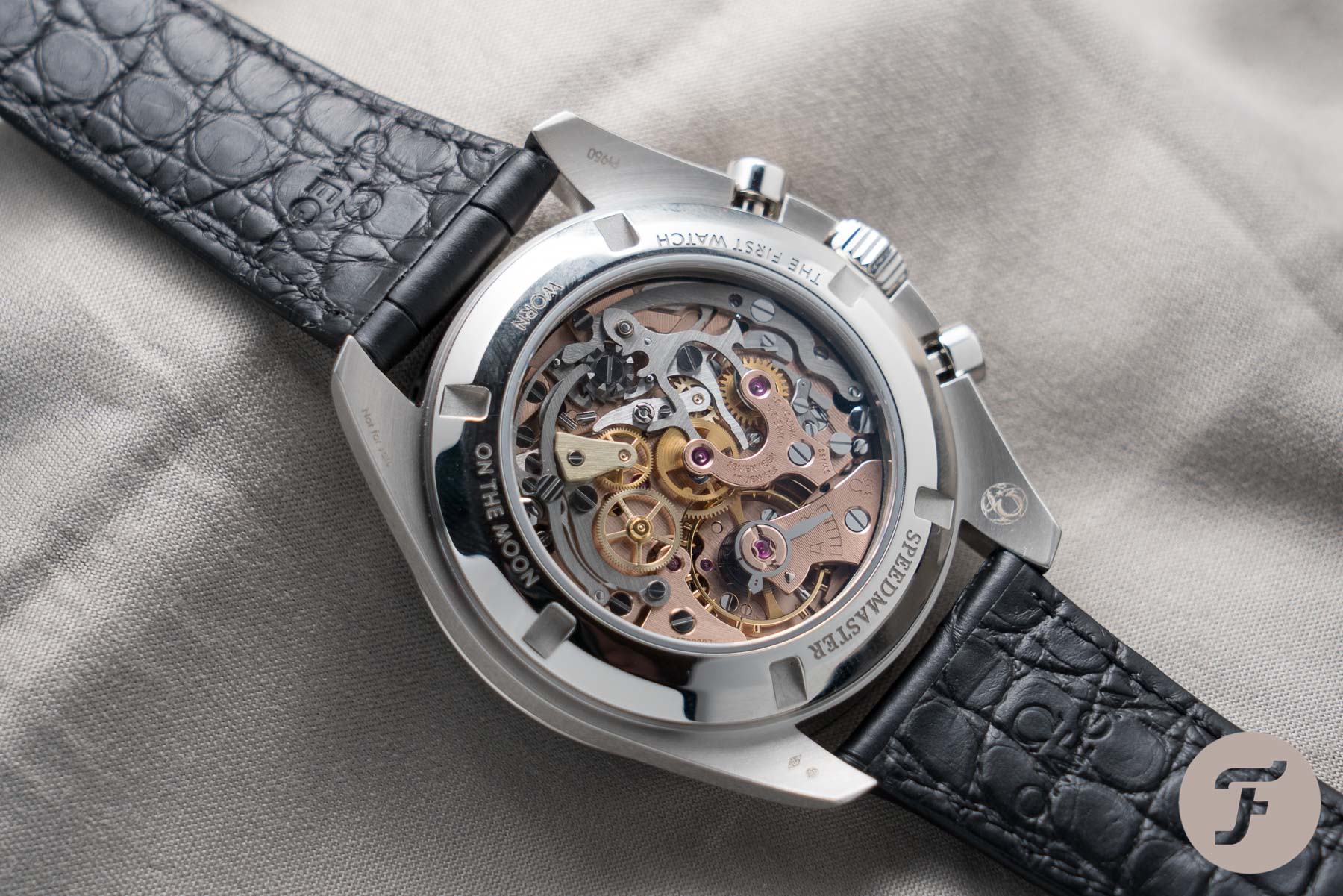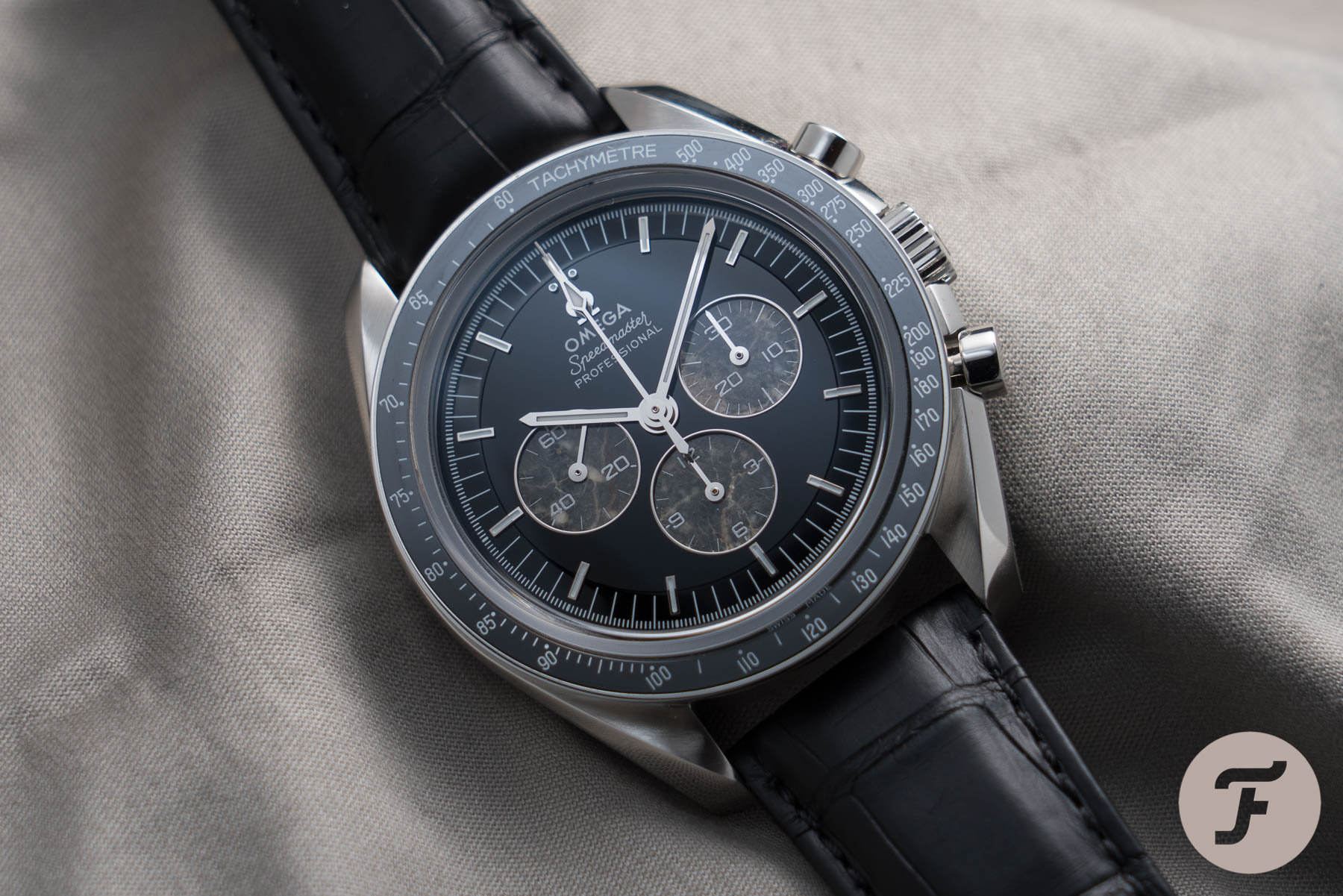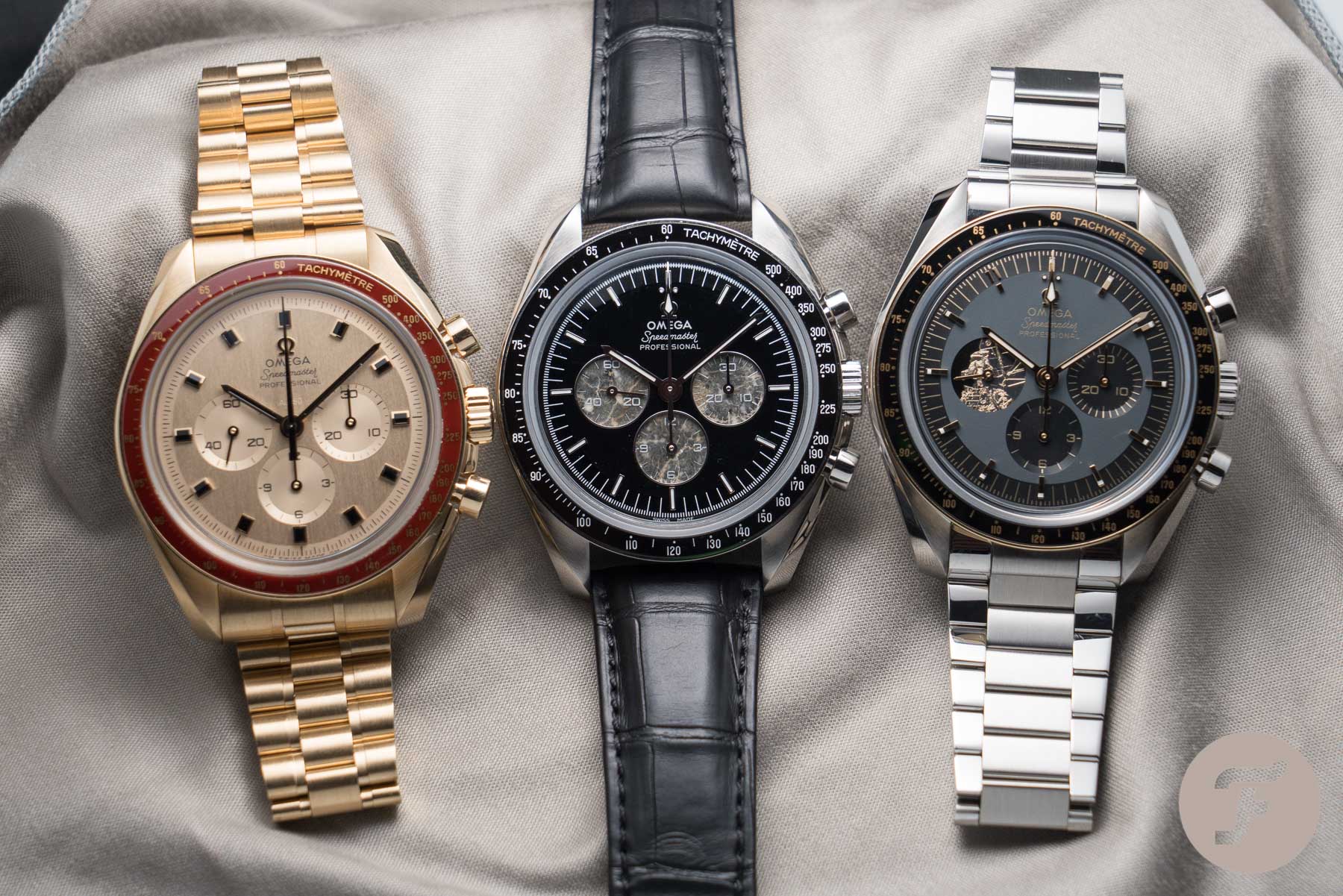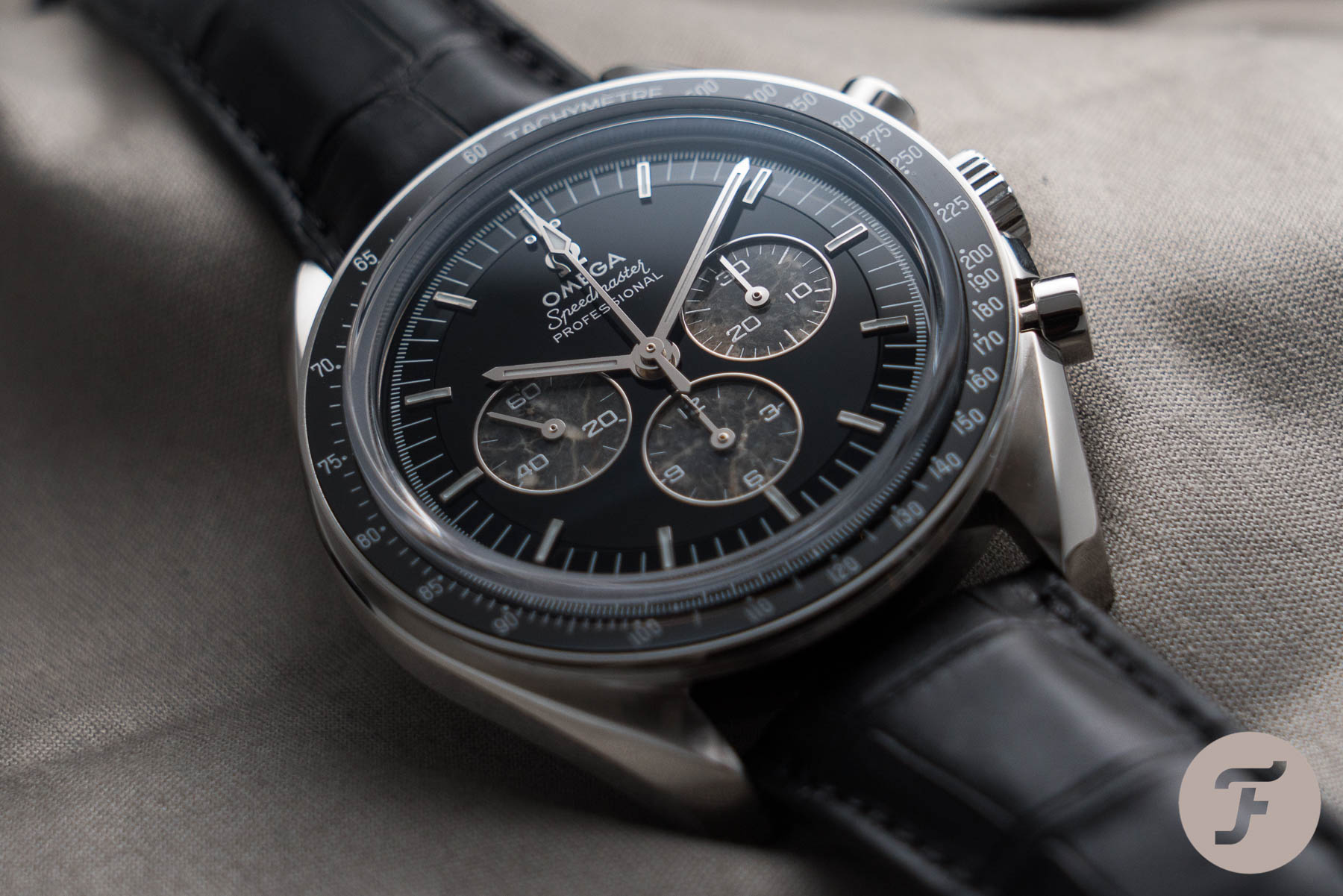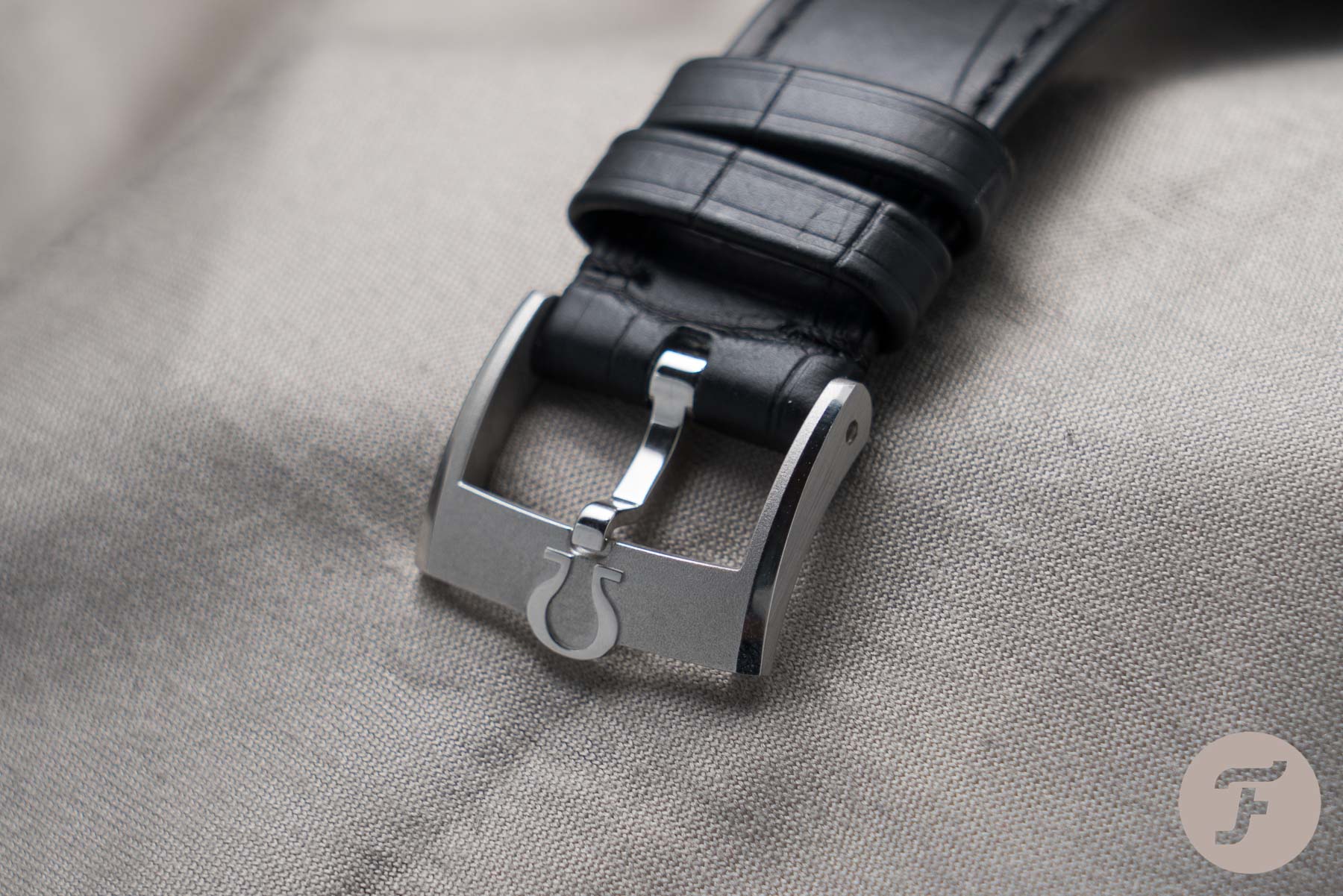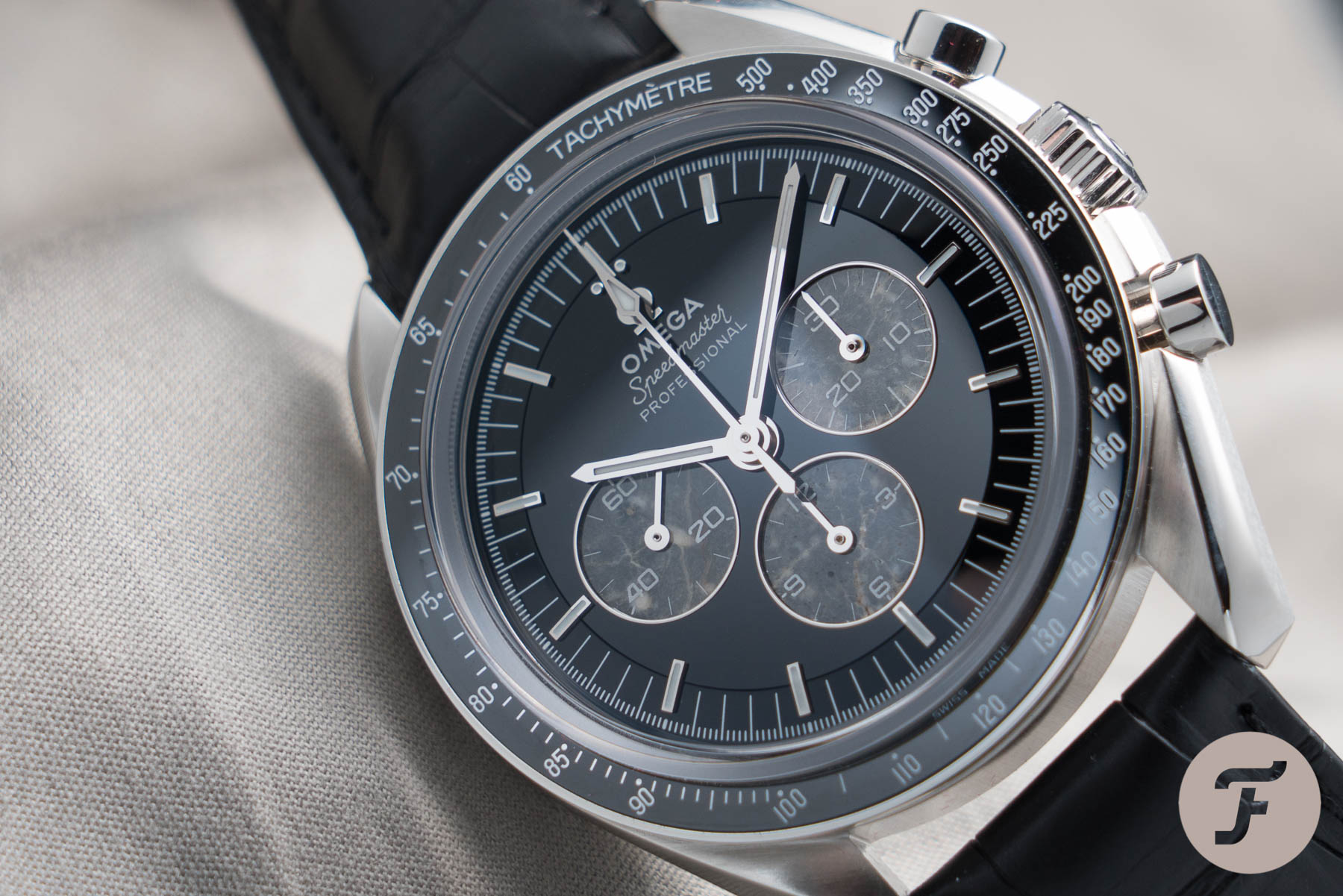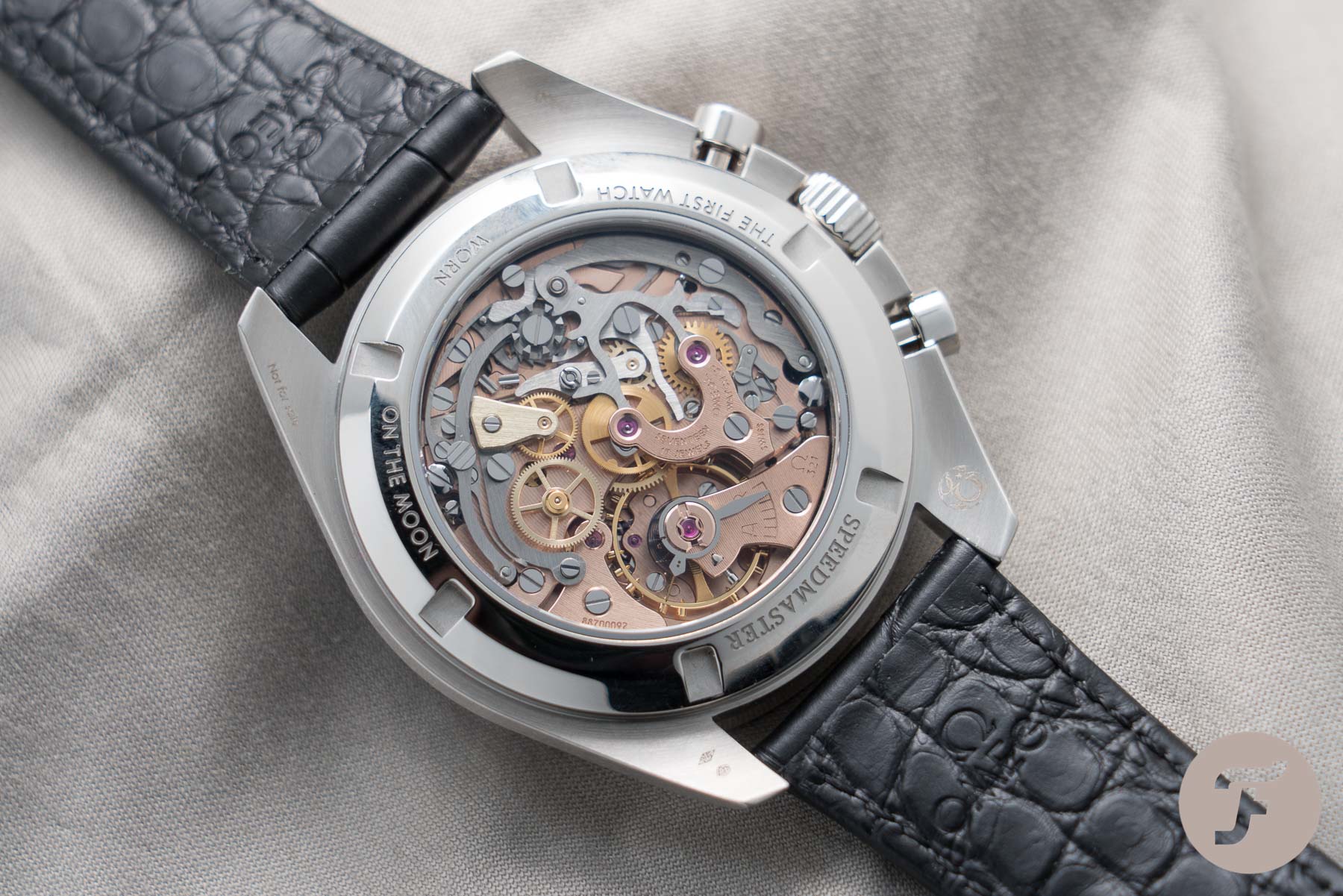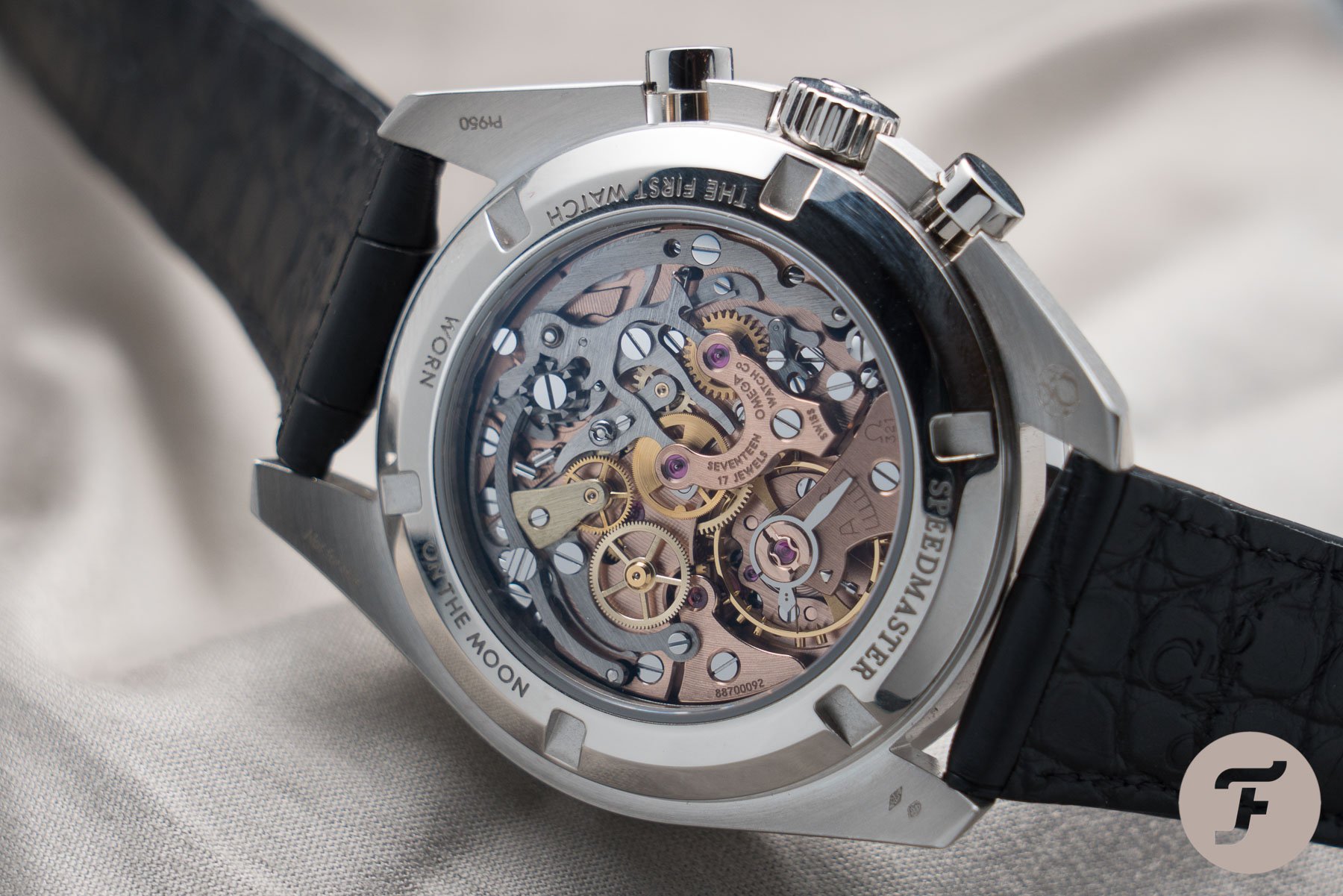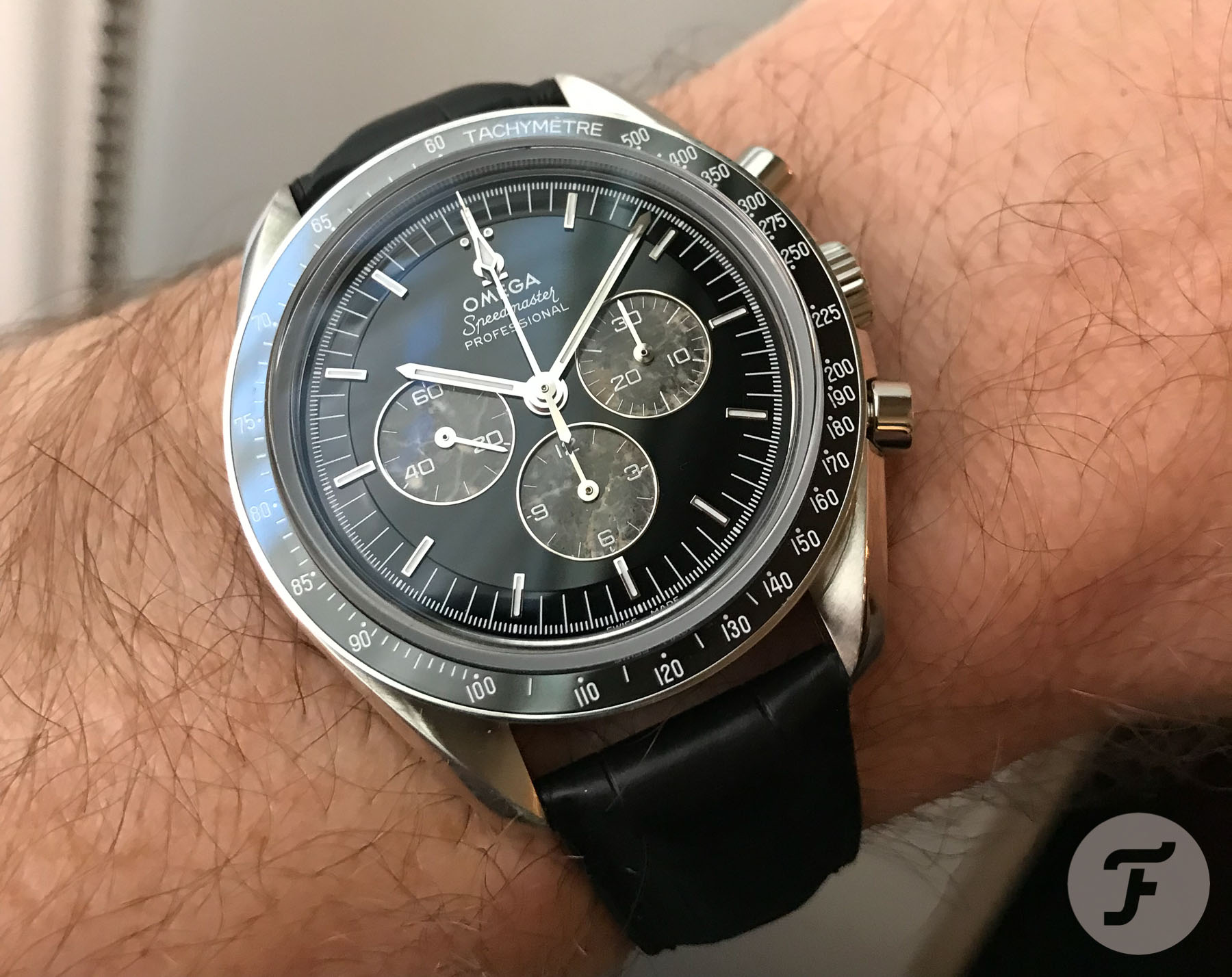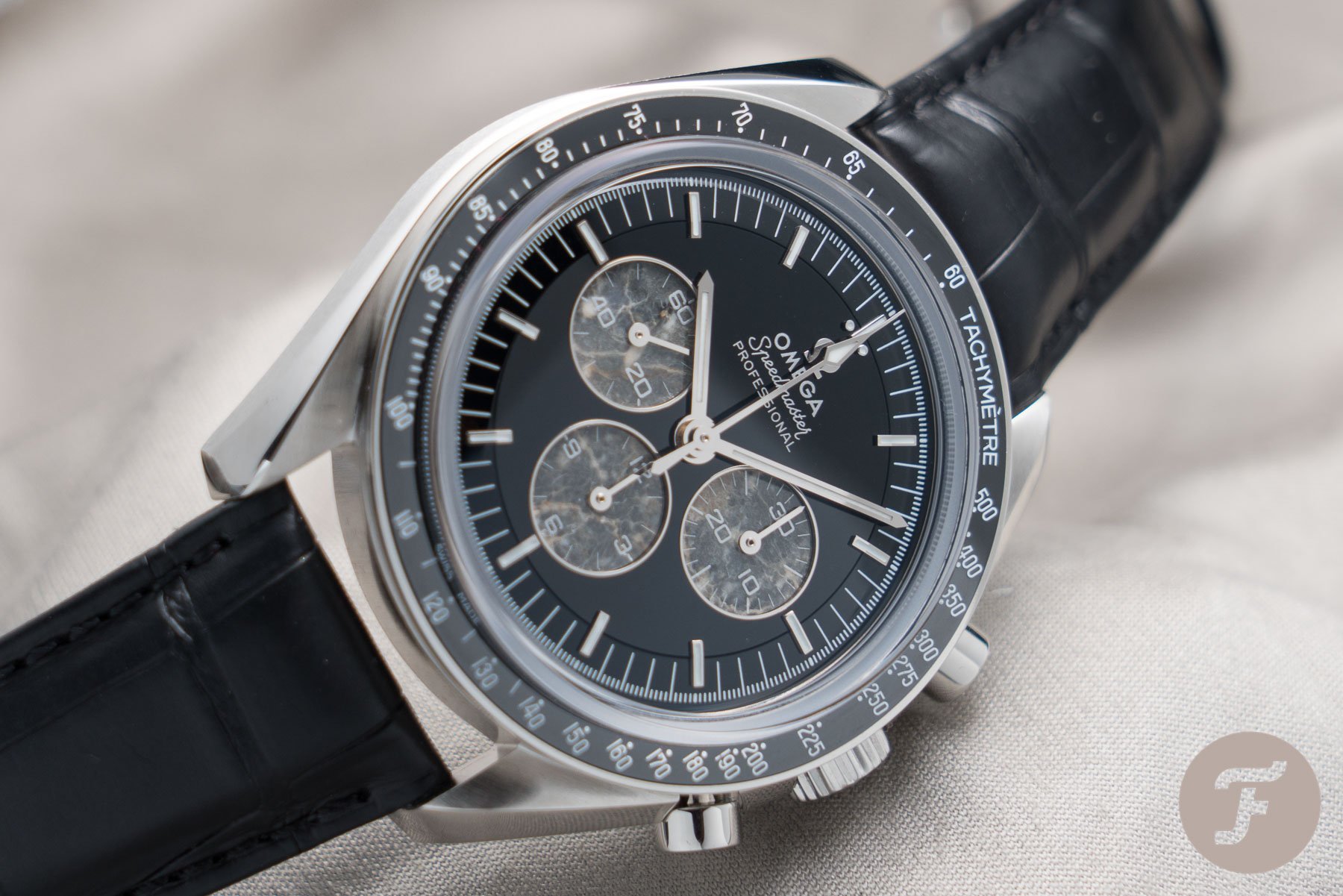Hands-On: Omega Speedmaster Moonwatch Platinum Caliber 321
On July 21st, exactly 50 years after Armstrong and Aldrin set foot on the Moon, Omega re-introduced their Speedmaster Professional Moonwatch caliber 321. In platinum. Meet the Omega Speedmaster reference 311.93.42.30.99.001.
My first Speedmaster was a reference 145.012-67, produced in February 1968 according to the Omega archives and with caliber 321. At the time, in 1999, the watch was even cheaper than a caliber 861 with less mileage, but those days are long gone. In hindsight, I am happy that I chose the caliber 321 Speedmaster as a first watch (although I was actually after a more modern one, for daily wear) and I still have it today. Never sell your first Speedmaster, as they say!
Over the years, and you might have experienced this yourself as well, it has become tougher to find a Speedmaster caliber 321 in decent condition. Oh, I remember the times in the early 2000s browsing eBay and watch forums for those 145.012s with caliber 321, and purchased a few at 1000 Euro each. A lot of money for me, being a student, so I often found myself selling them again to fund my student’s life. I always kept my first one though, which I still wear at times.
Speedmaster Moonwatch Platinum Caliber 321
During all these years, collector friends of mine always indicated how much they’d love it if Omega would be able to use the caliber 321 again. This movement has been with Breguet for a long period, but earlier this year, during our first Speedy Tuesday event of 2019, Omega announced what these watch collector friends hoped for: the re-introduction of the caliber 321. Raynald Aeschlimann, CEO of Omega, said during that day: “The first Speedmaster with this new caliber 321 movement will be in precious metal.”. And although a lot of collectors had hoped for something in steel and more accessible, the first Speedmaster is indeed in a precious metal: platinum.
Apollo XI
Some had the hope that the caliber 321 would be in the steel Apollo XI edition of this year, or even in the 18-carat gold Speedmaster Apollo XI, but especially the latter wouldn’t have made sense. The original gold Speedmaster Apollo XI from 1969 also had the shuttle-cam caliber 861 movement, so doing a re-edition with a caliber 321 would have been historically incorrect. Instead, Omega decided to use their new caliber 3861 movement for these Apollo XI editions and make them ‘firsts’ to use this improved Moonwatch caliber with Master Chronometer certification. We covered the Apollo XI 50th anniversary editions more than once on Fratello, but I can tell you from first hand that the caliber 3861 is a fantastic movement with impressive accuracy, well within the specs of 0 – 5 seconds per day on average.
The Speedmaster Moonwatch Platinum caliber 321 is not part of the Apollo XI 50th anniversary, but I want to show you the three most important Speedmaster releases – so far – in one picture. I write ‘so far’, as I expect that Omega will introduce a steel version of the Speedmaster with the caliber 321 this year as well. Delivery is probably not going to happen in 2019, but it gives us something to look forward to for 2020.
Gene Cernan
Based on the platinum edition of the Speedmaster Professional Moonwatch with caliber 321, a lot of guesses are being made on forums and social media. Some assume that the steel one will be a more accessible version of the platinum, but in my opinion, this would be too close to the Apollo-Soyuz watch with meteorite dial that Omega did a few years ago (here). Although that’s one of my favorite steel Speedmaster variations (yet I don’t have one still), my guess is that one has to pay closer attention to the initial presentation/announcement of the caliber 321, where they indicated that the movement they used, as a result of a tomography of the caliber 321 used in Gene Cernan’s 105.003 Speedmaster. So, I draw my conclusion of that specific announcement and let’s see what Omega will come up with. Below, the Speedmaster 105.003 that Cernan wore on the Moon.
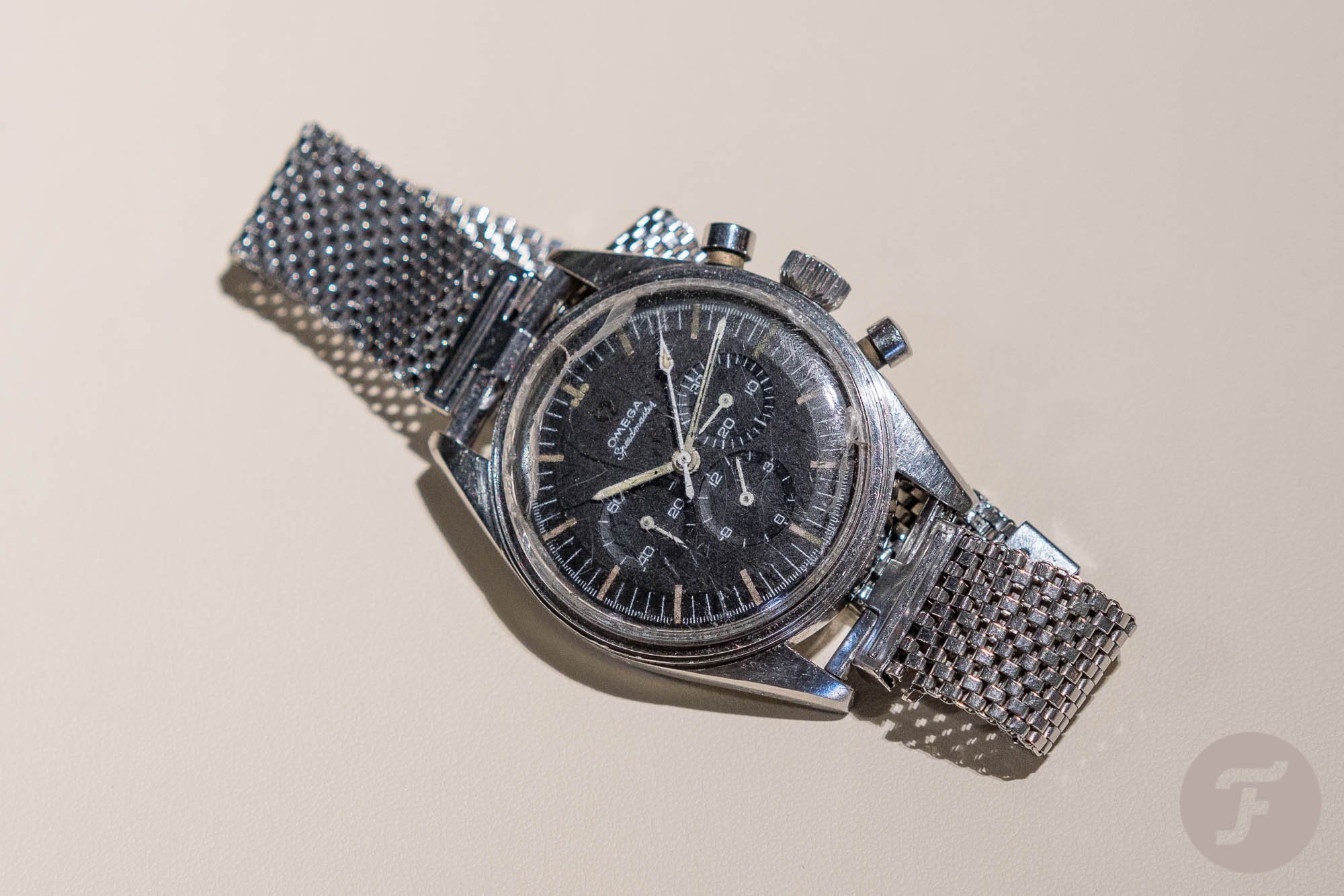
Platinum, Onyx, and Meteorite
But let’s go back to the Omega Speedmaster Moonwatch Platinum caliber 321. Based on the original 105.012, but using luxurious materials such as platinum (with some gold in the alloy, but respecting the Pt950 standard) for the case and onyx and meteorite for the beautiful dial. To start with the latter, the dial is made of two layers basically. This is done to achieve the step-dial effect, that Omega has been using for their Speedmasters from 1957 till 1974. And more recently, with the Speedmaster Speedy Tuesday Ultraman edition, of course. That Ultraman uses an aluminum dial, which is an advantage if you want to create a step-dial effect. With material like onyx though, it is much more challenging to achieve, that’s why Omega used two layers.
As you can see below, the white gold applied hour markers are shaped in such a way, that they touch both the outer dial as well as the center dial. The sub-dials have sunken meteorite surfaces. White gold rims surround the lunar meteorite subdials. What makes this watch stand out, in my opinion, is the pitch-black dial as a result of using onyx. Difficult to capture on pictures (and Omega did not allow us to publish the video just yet), but it is one of the most impressive black dials I’ve ever seen. The white gold hands give excellent contrast to the black dial and the chronograph seconds hand has the short triangular end as well, just like the original 105.012 ‘Moonwatch’.
The Speedmaster reference 311.93.42.30.99.001 comes on an alligator strap with a platinum buckle. No folding clasp, but a beautifully finished buckle in the same material (Pt950Au20) as the case.
DO90 Bezel
For Speedmaster fans, and the Speedy Tuesday community, the meaning of DO90 or DON is immediately clear. For those who are relatively new to the game, I will explain this ‘code’. DO90 or DON stands for Dot-Over-Ninety, which refers to the bezel. As you see on the bezel, there’s a little dot (indicator) just above the ’90’ on the tachymeter scale, on the upper right. Omega used bezels with this type of printing of the ’90’ and its dot until 1970. Afterward, the dot was positioned a bit lower. Until recently again, when Omega realized collectors had a thing going on for this DO90 bezel. Proud to say that with the Speedy Tuesday Ultraman, the DO90 was back in business and we’ve also seen it on this year’s Apollo XI releases. Needless to say that this bezel is made of ceramic, not aluminum. The tachymeter scale is in enamel.
Caliber 321
Let’s start with the essential stuff to some: the caliber 321 was the only Speedmaster movement that was used on the Moon. Sure, there was a Speedmaster 145.022 with caliber 861 used ‘near’ the Moon, as part of some test project by astronaut Ron Evans, but no astronaut set foot on the Moon wearing a Speedmaster with that caliber. We wrote it before in this article, but the Speedmaster references used on the Moon are the 105.003, 105.012 and 145.012. The 105.012 is the reference used by Aldrin and Armstrong, and this is also the reference used to create this Speedmaster Moonwatch Platinum caliber 321.
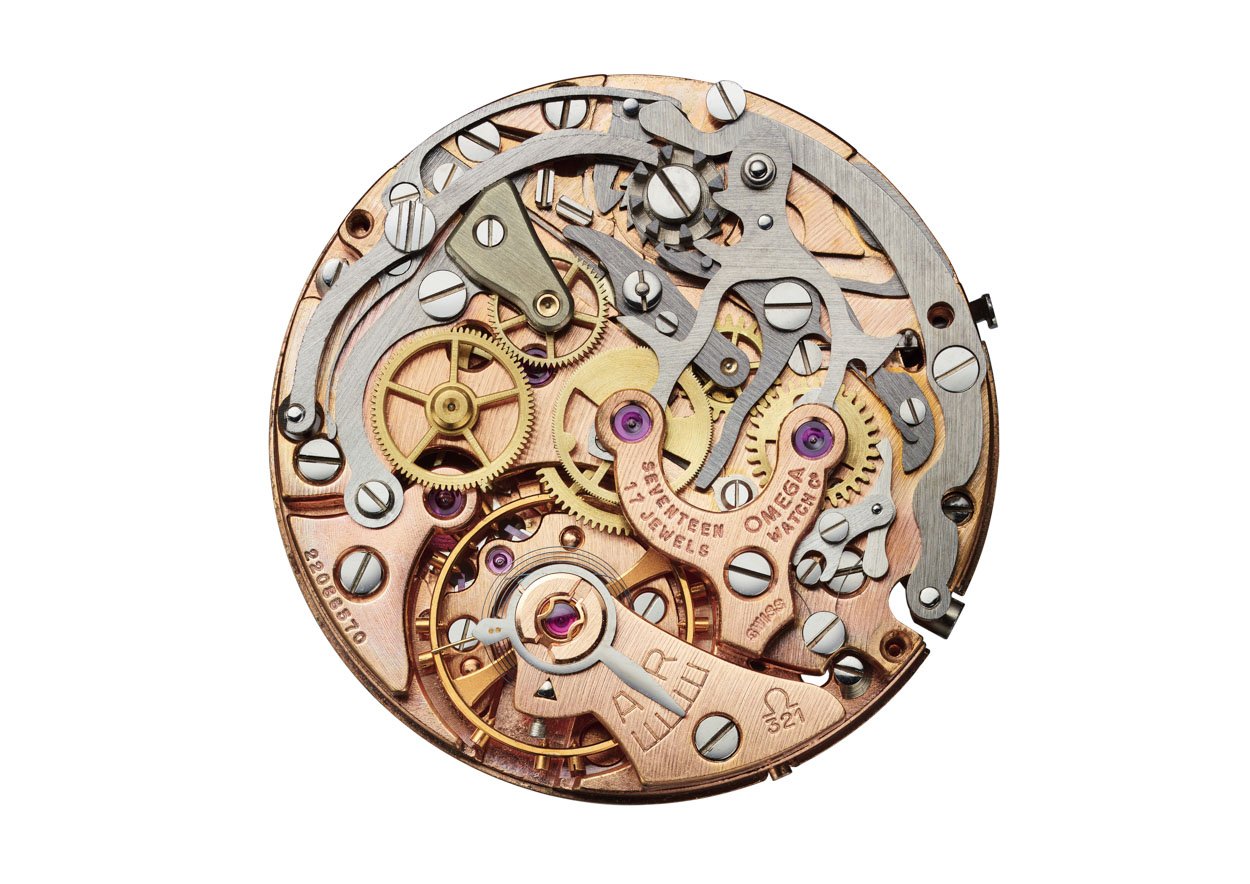
Now, the Omega caliber 321 is derived from the Lémania (mind the é) 27 CHRO C12 movement that was introduced in 1942. Omega started developing their version of that movement in and called it the caliber 321 in 1946. This column-wheel caliber 321 chronograph movement had a screwed balance oscillating at 18000vph, a power reserve of 44 hours and had 17 jewels. Omega started using it for the Speedmaster CK2915 when it came out in 1957 and was used till 1968 when they replaced it with the caliber 861 movement. The caliber 321 movement was a copper-colored movement, as they did at the time, and there are two different (‘major’) versions. The caliber 321 used for the new Speedmaster Moonwatch Platinum caliber 321 is based on the second-generation 321. This can be easily identified by the shape of the clutch bridge. In the first generation, the clutch bridge was symmetrical shaped, in the second generation (1964 onwards) it was asymmetrical. For those who don’t know where to look, it is the bridge in the upper left (and left from the column-wheel) and has this awkward green-ish color in the picture above. In the picture below, of the new caliber 321 movement, it can be observed at the same height as the ‘On’ engraving from ‘On the Moon’. Also there it has this odd color, compared to the rest of the movement. It is because it’s made of German silver.
The new caliber 321 might seem copper-colored as well, like the original caliber 321, but it isn’t. In fact, it is Sedna gold. Omega’s own rose gold alloy. Of course, it is plated, not solid. The finish on the movement is just stunning, as you can see. Beautiful brush effects on all the surfaces and it is an exact copy of the original that had precisely the same finishing. I am thrilled that Omega chose to put a sapphire case back on this Speedmaster Moonwatch Platinum caliber 321 watch, despite initially telling us they wouldn’t. Since we’re at the case back anyway, you will find the bevel on there, as the original 105.012 had as well (not all 105.012s had this, the later 105.012-66 came without). In the lugs of the case, you’ll find some markings for the use of platinum (Pt950), the Omega serial number and the Omega globe symbol (which we covered here).
The ‘action on the pushers’ is as smooth and soft as it was on the original caliber 321, my first Speedmaster. It is a joy to use, and there is quite a difference between operating the caliber 321 and the 861 (and its successors). Not sure you are going to use the chronograph, but rest assured that it is a pleasure to push those buttons. Via the sapphire case back, you will have a front-row position to observe those mechanics moving upon your ‘click.’
Speedmaster Moonwatch Platinum caliber 321 on the wrist
It is challenging to appreciate this watch without strapping it on your wrist. That’s the case with many watches, especially watches that show a lot of details, but in the case of this Speedmaster Moonwatch Platinum caliber 321, it is also the weight that impresses the wearer. Omega chose to use an alligator strap for this watch (with alligator lining), and not a platinum bracelet. To some, this is a pity, but having worn a full platinum Speedmaster during Baselworld 2018, it was a bit too much (for me). The hue of the platinum case is beautiful, but it’s the onyx dial that makes this Speedmaster with new caliber 321 simply stunning.
With a retail price around €56.000,-, this watch is certainly not for everyone out there. Although it is not limited by a specific number, the price makes it an exclusive reference. Those who have the funds for this Speedmaster Platinum caliber 321 with reference 311.93.42.30.99.001, might have to wait a bit. Deliveries will take place later this year, and Omega lets us know that they expect a production between 50 and 100 per year of these watches. It will be regular production though, so no limited number or time limitation.
In total, Omega estimates a production between 1000 and 2000 caliber 321 movements per year. In a dedicated workshop, every Speedmaster watch with a caliber 321 will be assembled and finished by one specific watchmaker. This is also applicable for the Speedmaster caliber 321 in stainless steel that yet needs to be introduced. Don’t expect a Speedmaster with caliber 321 for the same price as the current caliber 1861, or perhaps even as the steel Apollo XI with caliber 3861. I guess that it will be above 10.000 Euro given the use of the new caliber 321 movements and its special workshop involved.
Anyway, the platinum version is a feast for the eyes! The guests of the Speedy Tuesday Event in New York on September 17 were among the first to give it a try on the wrist. The first reactions were very positive, but reality kicked in when the price was communicated, of course. This watch is for the lucky few, and I am sure they will not be disappointed. All specifications can be found in the table below.
More information via Omega online.

